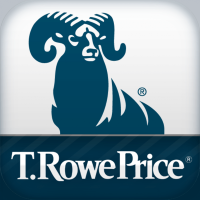Workday, Inc. (WDAY) Bulls vs. Bears Analysis
Introduction
Workday, Inc. (NASDAQ: WDAY), a leader in enterprise cloud applications for HR and finance, has emerged as a pivotal player in the digital transformation of workforce and financial management. As the company navigates macroeconomic uncertainties and accelerates its AI-driven innovation, investor sentiment remains divided. Below is a comprehensive analysis of the bullish and bearish perspectives on Workday’s growth trajectory, competitive positioning, and financial outlook.
#Bulls Say: The Case for Optimism
1. Mid-Teens Subscription Revenue Growth with Margin Expansion
Workday’s FY2027 targets of mid-teen subscription revenue growth and 30% non-GAAP operating margins reflect disciplined execution and operational efficiency. Bulls highlight:
- Q3 FY2025 Performance: 16% YoY subscription revenue growth and 26% non-GAAP operating margins, demonstrating progress toward long-term goals.
- Margin Leverage: Streamlined operations (e.g., AI-driven automation) and scale benefits from a $7B+ annual recurring revenue (ARR) base.
2. Market Leadership in Core HCM and Financials
Workday dominates critical enterprise software verticals:
- HCM: >50% Fortune 500 penetration, with Gartner Magic Quadrant leadership in Cloud HCM (2024).
- Financials: $1B+ ARR in financial services, retail/hospitality, and professional services. Recent wins include AWS (Workday Planning) and Deloitte.
Key Differentiators:
- Platform Consolidation: 90% of government/higher education wins were full-suite deals (e.g., Defense Intelligence Agency, University System of Georgia).
- AI Integration: Workday Assistant (Gen AI Copilot) reduces HR case volumes by 30% and enhances employee self-service.
3. AI Innovation Driving Product Differentiation
Bulls emphasize Workday’s decade-long AI investment, now accelerated by generative AI:
- Workday Skills Cloud: Used by nearly 50% of HCM customers to optimize talent management.
- AI Marketplace: Partnerships with Accenture, ADP, and AWS to deliver responsible AI solutions.
- Acquisitions: Evisort (document intelligence) and HiredScore (talent orchestration) enhance data-driven decision-making.
4. International Expansion and Federal Tailwinds
- Global Growth: Only 25% of revenue comes from outside the U.S., but EMEA/APAC momentum is accelerating (e.g., Decathlon in France, NTT DATA in Japan).
- Federal Opportunity: 80% of U.S. federal HCM/ERP systems remain on-premise. Post-election cloud migration tailwinds (e.g., Department for Science, Innovation and Technology in the UK).
5. Durable Customer Relationships and Upsell Potential
- Net Revenue Retention: >100% driven by land-and-expand strategy (e.g., Airbus, Dell, Lloyds Bank).
- Upsell Catalysts: Cross-selling Financials to HCM clients and Workday Planning ($1B+ TAM).
#Bears Say: The Case for Caution
1. Macroeconomic Sensitivity and Deal Scrutiny
Bears flag risks from prolonged sales cycles and budget reprioritization:
- Q3 FY2025 Challenges: Delayed revenue recognition from strategic deals (e.g., Defense Intelligence Agency) impacted near-term guidance.
- IT Spending Normalization: CFOs prioritize ROI/TCO metrics, pressuring Workday to justify premium pricing.
2. Competitive Pressures in Core Markets
- Legacy Players: Oracle and SAP aggressively transition to cloud (e.g., SAP SuccessFactors, Oracle Fusion).
- Vertical SaaS Competitors: ADP (payroll), ServiceNow (HR Service Delivery), and niche fintechs.
Market Share Risks:
- HCM saturation in Fortune 500 limits greenfield opportunities.
- Financials adoption lags HCM, requiring significant R&D (e.g., industry-specific solutions).
3. Valuation Concerns Amid Growth Moderation
- FY2027 Targets Priced In: Shares trade at ~8x EV/CY2025 Revenue, reflecting high expectations.
- Margin Execution Risks: Achieving 30% operating margins requires flawless cost discipline amid hiring (e.g., 2,500 new employees in FY2025).
4. Execution Risks in International Markets
- EMEA Headwinds: Deal scrutiny and localization challenges (e.g., GDPR compliance).
- APAC Complexity: Requires heavy partner reliance (e.g., Kainos in Japan) and slower cloud adoption.
5. Dependency on AI and Upselling
- AI Adoption Risks: CIOs remain cautious about data security and ROI from generative AI.
- Upsell Dependency: Financials growth hinges on convincing HCM clients to expand ($40K+ average ACV for Financials vs. $20K for HCM).
Financial Snapshot (Q3 FY2025)
| Metric | Value | YoY Growth |
|---|---|---|
| Subscription Revenue | $1.85B | 16% |
| Non-GAAP Operating Margin | 26% | +400 bps |
| 12-Month Backlog | $7.3B | 18% |
| Cash & Investments | $7.1B | N/A |
| Net New ACV (Partner-Driven) | 10%+ | N/A |
Comparative Analysis: Bulls vs. Bears
| Factor | Bulls' View | Bears' View |
|---|---|---|
| Growth Targets | Achievable via AI innovation and international expansion. | Aggressive given macro risks and competition. |
| Margin Expansion | Operational leverage and automation will drive 30% by FY2027. | Rising R&D/sales costs could pressure margins. |
| AI Leadership | Differentiator in talent/financial analytics. | Unproven ROI; security concerns may slow adoption. |
| Federal Opportunity | $10B+ TAM with cloud migration tailwinds. | Lengthy sales cycles and procurement hurdles. |
| Valuation | Justified by durable growth and margin profile. | Premium multiples leave little room for execution missteps. |
Conclusion: Balanced Perspective for Investors
Bulls argue that Workday’s platform consolidation strategy, AI innovation, and federal/international expansion will sustain mid-teens growth and margin expansion. The company’s $7B+ ARR base, partner ecosystem (10%+ net new ACV), and sticky enterprise relationships provide a defensible moat.
Bears counter that valuation multiples (8x EV/Revenue) already price in perfection, while macroeconomic uncertainty, competitive pressures, and execution risks in Financials/EMEA could derail targets.
Investor Takeaway: Workday remains a high-conviction growth story for investors comfortable with premium valuations and execution risks. Near-term volatility from macro headwinds and deal timing should be weighed against long-term AI and international optionality.
Note: All data sourced from Workday's Q3 FY2025 earnings call and public filings. Forward-looking estimates subject to change based on macroeconomic conditions.
What are the key factors influencing investor sentiment?
Investor sentiment toward Workday is shaped by a combination of financial performance, strategic execution, and external market dynamics:
-
Growth Trajectory vs. Guidance:
- Workday’s ability to meet or exceed its mid-teens subscription revenue growth target for FY2027 is critical. Bulls focus on consistent execution (e.g., 16% YoY subscription growth in Q3 FY2025) and backlog growth (18% YoY). Bears question whether macroeconomic headwinds or saturation in core markets could slow momentum.
- Margin expansion to 26% non-GAAP operating margins (Q3 FY2025) signals operational efficiency, but achieving 30% by FY2027 requires sustained cost discipline amid hiring and R&D investments.
-
AI Innovation and Adoption:
- Workday’s integration of generative AI (e.g., Workday Assistant, Skills Cloud) is viewed as a differentiator. Successful adoption by >2,000 HCM customers and partnerships with AWS/Accenture bolster confidence.
- Skepticism persists about ROI realization and whether AI features can justify premium pricing or drive upsell momentum.
-
Market Position and Competition:
- Dominance in HCM (>50% Fortune 500 penetration) and growing Financials footprint ($1B+ ARR in three industries) reinforce bullish views. However, competition from Oracle, SAP, and vertical SaaS players threatens market share.
- Platform consolidation wins (90% full-suite deals in government/education) highlight cross-selling potential, but Financials adoption lags HCM, creating execution risk.
-
Macroeconomic Sensitivity:
- Longer sales cycles and federal procurement delays (e.g., Defense Intelligence Agency deal) have tempered near-term optimism. Investors monitor IT budget trends, particularly CFO prioritization of ROI/TCO metrics.
- International growth (25% of revenue outside U.S.) offers diversification but introduces complexity (e.g., EMEA deal scrutiny, APAC localization).
-
Valuation and Sentiment Multiples:
- At ~8x EV/CY2025 revenue, Workday trades at a premium to peers. Bulls argue this reflects durable growth and margin upside; bears warn multiples leave no room for missteps.
How does Workday's AI strategy compare to competitors?
Workday’s AI strategy is distinct in its vertical integration, responsible deployment, and ecosystem collaboration:
-
Platform-Native AI vs. Bolt-On Solutions:
- Workday embeds AI directly into workflows (e.g., Skills Cloud for talent management, AI-driven contract analysis for finance). This contrasts with competitors like Oracle and SAP, which often rely on partnerships or acquisitions (e.g., SAP’s collaboration with Microsoft for Copilot integration).
- Generative AI features such as Workday Assistant are trained on proprietary datasets, ensuring relevance to HR/finance use cases. Competitors like ServiceNow focus on horizontal AI (e.g., Now Assist for IT workflows).
-
Responsible AI and Data Governance:
- Workday emphasizes ethical AI development, with features like “Explainable AI” for transparency in recommendations. This addresses CIO concerns about data security and compliance, differentiating it from vendors with less granular controls.
- Competitors like ADP and UKG face scrutiny over data usage in AI models, particularly in payroll and compliance.
-
Acquisition-Led Innovation:
- Workday’s acquisitions of HiredScore (talent orchestration) and Evisort (document intelligence) enhance AI capabilities in niche domains. By contrast, Oracle relies on its broader cloud infrastructure (OCI) to train AI models, while SAP prioritizes industry-specific AI via industry cloud partnerships.
-
Partner Ecosystem:
- Workday’s AI Marketplace and partnerships with Accenture/ADP enable customized solutions (e.g., Accenture’s skills accelerator). Competitors like Salesforce leverage hyperscaler alliances (e.g., AWS, Google Cloud) for scalability but lack Workday’s vertical depth.
-
Adoption Metrics:
- Over 50% of HCM customers use AI-driven Skills Cloud, demonstrating embedded adoption. Competitors such as Cornerstone OnDemand report lower AI utilization rates (~30% for skills analytics), highlighting Workday’s first-mover advantage.
What are the potential risks for Workday in the next year?
-
Macroeconomic-Driven Demand Softening:
- Prolonged IT budget scrutiny could delay large deals, particularly in Financials, where Workday faces competition from legacy ERP vendors. Federal spending post-election may accelerate, but procurement cycles remain unpredictable.
-
Execution Risks in Financials Expansion:
- Financials contribute ~30% of revenue, but adoption requires displacing entrenched systems (e.g., SAP S/4HANA). Slower-than-expected uptake in industries like healthcare or manufacturing could jeopardize FY2027 targets.
-
AI Adoption and Monetization Challenges:
- Despite innovation, ~70% of Workday’s customers have yet to adopt AI features. Failure to demonstrate clear ROI (e.g., productivity gains, cost savings) could limit upsell potential and erode pricing power.
-
Partner-Driven Growth Constraints:
- While partners drive >10% of net new ACV, reliance on third parties (e.g., Accenture, Deloitte) for implementation introduces dependency risks. Delays or quality issues in partner-led deployments could harm retention.
-
Regulatory and Compliance Headwinds:
- GDPR in EMEA and evolving AI regulations (e.g., EU AI Act) may increase compliance costs. Workday’ federal business, though promising, faces stringent procurement requirements and political risks.
-
Talent Retention and Hiring Costs:
- Plans to hire 2,500 employees in FY2025 could strain margins if productivity lags. Competition for AI/cloud talent intensifies as hyperscalers (AWS, Microsoft) and startups vie for similar skill sets.
-
Valuation Contraction:
- A broader tech sell-off or growth deceleration (even slight) could compress multiples. Workday’s premium valuation assumes flawless execution, leaving minimal margin for error.















